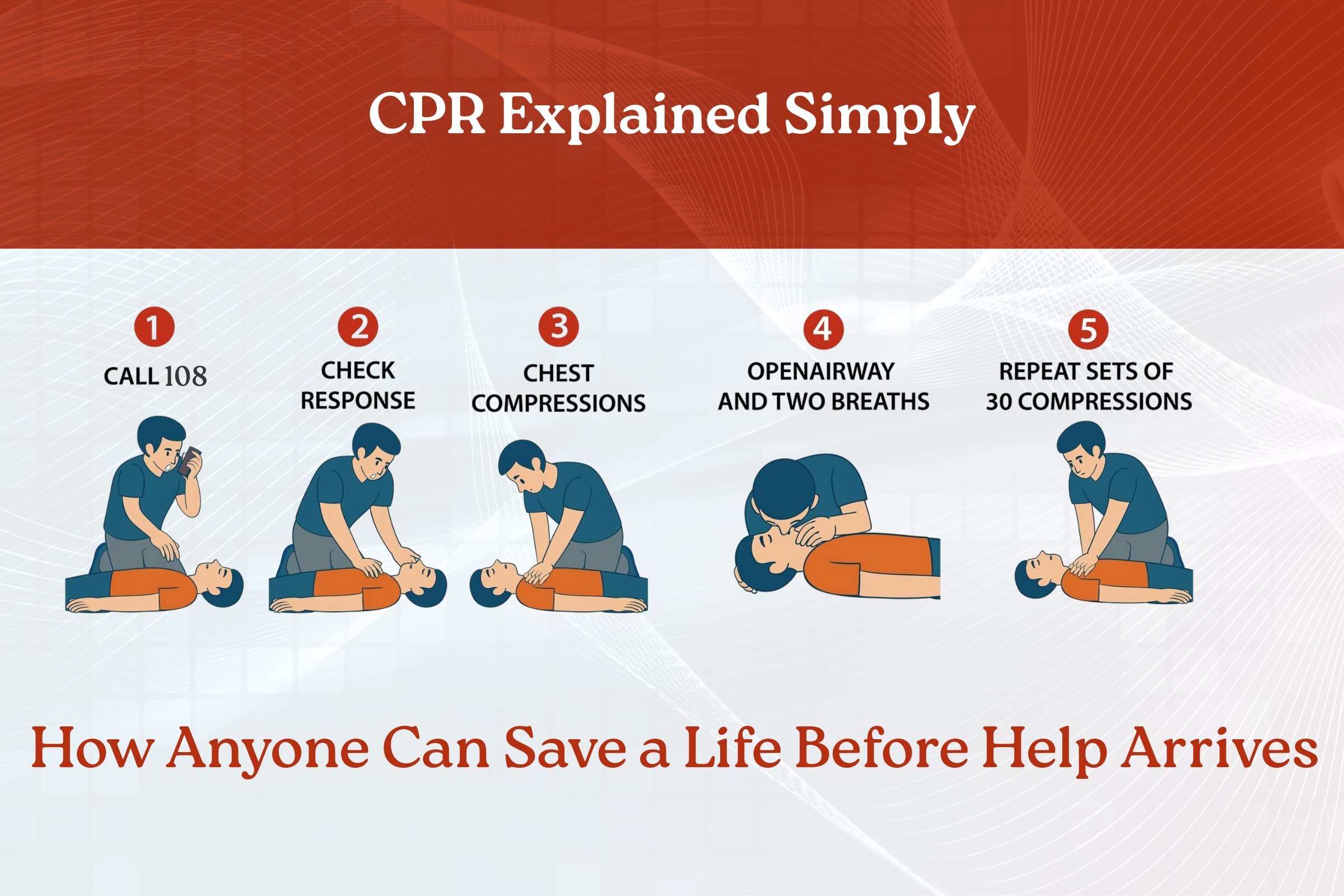Every Second Counts: Why CPR Matters
The heart can stop without warning. When that happens, blood flow to the brain and body halts, and every minute without circulation reduces the chance of survival. CPR (Cardiopulmonary Resuscitation) is a simple, powerful action anyone can learn to keep oxygen flowing until professional help arrives.
“Dil rukne ka matlab zindagi rukna hai – aur CPR woh chabi hai jo phir se dhadkan shuru kar sakti hai.”
— (When the heart stops, life stops – but CPR is the key that can restart the heartbeat.)
Why CPR matters
CPR maintains vital blood flow to the brain and heart. In many studies and clinical guidelines, immediate bystander CPR can double or triple a person’s chance of survival after sudden cardiac arrest. It’s not just a medical technique — it’s an action that turns a helpless situation into a survivable one.
How to perform CPR, simple steps anyone can follow
-
Check responsiveness:
Tap the person and shout loudly, “Are you okay?” look for normal breathing or movement. -
Call for help:
Dial your local emergency number immediately (ask a bystander to call if possible). -
Chest compressions:
Place both hands, one on top of the other, on the center of the chest. Push hard and fast about 100–120 compressions per minute. Aim for a depth of about 5–6 cm (2–2.5 inches) in adults. Let the chest fully recoil between compressions. -
Rescue breaths (if trained):
After 30 compressions, give 2 rescue breaths — tilt the head back, lift the chin, pinch the nose, and breathe into the mouth until the chest rises. If you are not trained or uncomfortable, continue hands-only compressions. -
Continue until help arrives:
Do not stop CPR unless the person shows signs of life (breathing, movement), a trained responder takes over, or you are physically unable to continue.
Overcoming hesitation — why awareness is everything
Fear of doing CPR incorrectly prevents many people from acting. Public health experts and cardiology specialists emphasize community training because each additional person who knows CPR becomes a potential lifesaver.
“Jab tak ambulance aati hai, tab tak aapki madad kisi ki zindagi bacha sakti hai.”
— (While the ambulance is on its way, your help can save someone’s life.)
Take action today
- Attend a certified CPR training session in your city or community.
- Watch demonstrations from trusted health organizations and follow official guidelines.
- Encourage schools, workplaces, and community centers to organize CPR workshops and drills.







